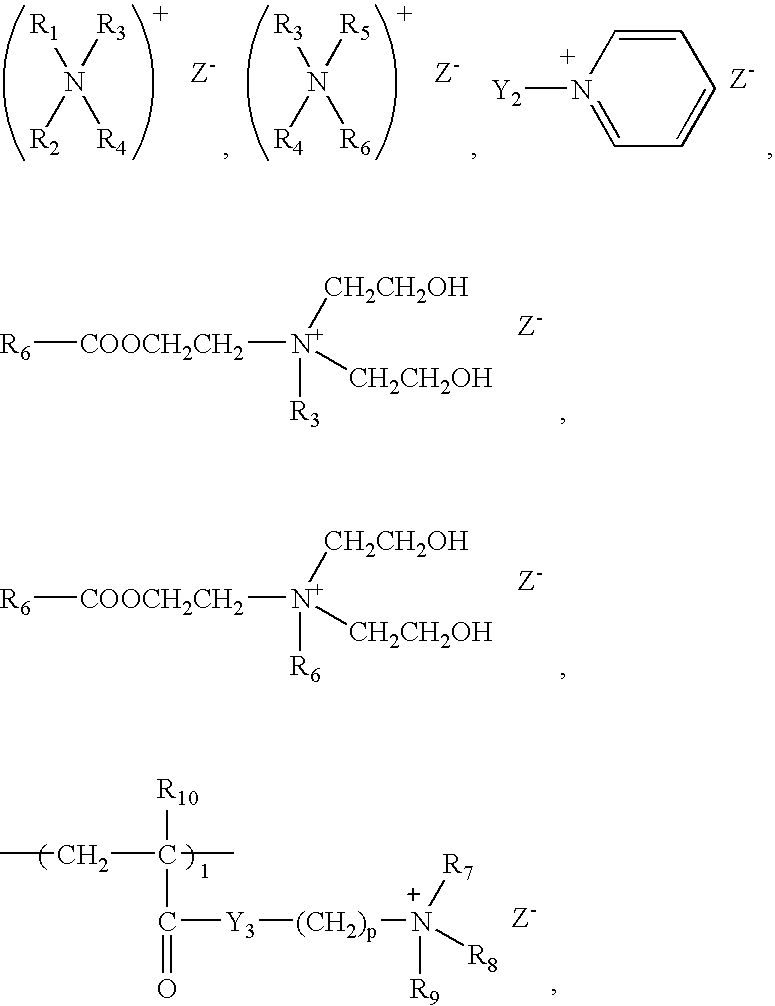Method of deinking waste paper using a reduced alkali system
- Summary
- Abstract
- Description
- Claims
- Application Information
AI Technical Summary
Benefits of technology
Problems solved by technology
Method used
Image
Examples
example 1
[0166]A blend containing a.) 38 wt % fatty acid or fatty acid mixture wherein about 85 wt % of the composition is between C16 and C18 and with on average about 75 wt % unsaturated fatty acids, b.) 47 wt % of an alkoxylated linear alcohol where the base fatty alcohol predominantly contains about C18 or greater with an average of 21 moles of oxyethylene per molecule of fatty alcohol, and c.) 15 wt % of water.
example 2
[0167]A blend containing a.) 38% fatty acid or fatty acid mixture wherein about 60 wt % of the composition is between C16 and C18 and with on average about 35 wt % unsaturated fatty acids, c.) 47 wt % of an alkoxylated linear alcohol where the base fatty alcohol predominantly contains about C18 or greater with an average of 21 moles of oxyethylene per molecule of fatty alcohol, and d.) 15 wt % of water.
example 3
[0168]A blend containing a.) 38% fatty acid or fatty acid mixture wherein about 66 wt % of the composition is between C16 and C18 and with on average about 45 wt % unsaturated fatty acids, b.) 47 wt % of an alkoxylated linear alcohol where the base fatty alcohol predominantly contains about C18 or greater with an average of 21 moles of oxyethylene per molecule of fatty alcohol, and c.) 15 wt % of water.
PUM
| Property | Measurement | Unit |
|---|---|---|
| Temperature | aaaaa | aaaaa |
| Percent by mass | aaaaa | aaaaa |
| Substance count | aaaaa | aaaaa |
Abstract
Description
Claims
Application Information
 Login to View More
Login to View More - R&D
- Intellectual Property
- Life Sciences
- Materials
- Tech Scout
- Unparalleled Data Quality
- Higher Quality Content
- 60% Fewer Hallucinations
Browse by: Latest US Patents, China's latest patents, Technical Efficacy Thesaurus, Application Domain, Technology Topic, Popular Technical Reports.
© 2025 PatSnap. All rights reserved.Legal|Privacy policy|Modern Slavery Act Transparency Statement|Sitemap|About US| Contact US: help@patsnap.com

